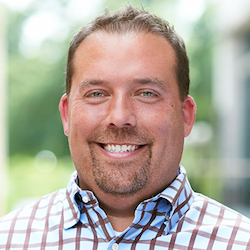
Senior health technology — such as analytic-equipped wearables — has the ability to revolutionize the aging experience by giving older adults a firm hold on their own health management. But to get them to that point, family and professional caregivers play a large role in streamlining senior health technology adoption.
Although those aged 65 or more years increasingly are living digitally connected lives compared with the generations before them, with 40% of older adults now owning smartphones, there is still room to de-stigmatize the adoption of health technology and create a more efficient road to beneficial adoption. In fact, only 6% of seniors currently are using a wearable device to track their health, according to a recent Welltok Senior Health and Technology survey. That leaves a big opportunity (59%, to be exact) to get those individuals moving toward a wearable-supported health future.
The majority of older adults may be eager to try new technology, but actually seeing benefits from adopting such senior health tech aren’t a given. Seniors must see the benefit at a personal level first to get the technology in their life — which is an entirely different scenario from their using health technology simply because caregivers ask them to. As senior health tech adapts to increase direct benefits to older adults, caregivers can jumpstart the process in three ways:
1. Showcase daily value.
The average 75-year-old deals with three or more chronic conditions and takes five or more medications. That’s a significant amount of added doctor appointments and daily regimens to sustain their health and independence. This means that adding one more factor to the mix with health technology must deliver daily value to stay relevant. And, for that matter, older adults shouldn’t be expected to keep up with technology that doesn’t prove itself a daily benefit in their life.
As seniors adopt health tech to aid in the aging experience, it is imperative that the technology they are letting into their lives makes a true difference. This may not mean the exact same thing for each individual, however. Some may need a simple reminder to go for a walk or take their medication. Others may want the ability to call 911 directly from a wearable so they feel safe and secure, whether in their own home or out in the world participating in hobbies and traveling.
2. Keep it simple.
Most of us have heard of the KISS method — keep it simple, stupid — during our years of school. Although that method most likely was introduced to you while you were learning the basics of crafting an English paper, the same approach should apply to senior health tech.
Accessibility is the lifeblood of any great tech device, whether you’re trying to reach 20 year olds or 70 year olds. Keeping technology simple and easy-to-use, however, is especially important for a streamlined senior tech adoption experience.
Older adults who have gone their entire lives without using health tech can’t be expected to search high and low for a solution that may or may not eventually make managing their health a little easier. If the technology is made available through their physicians or a local senior living community, however, then that accessibility removes the barriers to giving it a try. Once the technology is in an older adult’s hands, the daily value that it delivers will maintain engagement.
Caregivers must take on the important task of aligning their efforts with technology that is made specifically with seniors in mind. Although tech that has a broader generational reach can be useful in some cases, specific solutions for aging health applications are key to delivering that daily value that seniors seek. As aging individuals explore new technology, caregivers can streamline adoption by setting aside time to showcase how easy it is to integrate the solution into individuals’ daily lives, then taking time to check in with the older adults on any areas where they might benefit from further education.
3. Build the momentum.
It’s easy to get a solution going, then allow it to drop off just weeks down the road. That’s why, as soon as new technology is in a senior’s hands, all attention should go to keeping up engagement. And one of the most prominent driving factors behind senior engagement is caregiver engagement.
If caregivers aren’t engaged with the technology, then they certainly can’t expect seniors to be — and the best way to ensure this engagement is by choosing a solution that can aid in a caregiver’s everyday management of older adults’ health. For example, enlisting the help of a health data analytics solution can deliver valuable insights into health trends and issues that may have gone unnoticed before.
Senior health technology can give individuals the power to manage their health — and independence — to influence their aging experiences. Unfortunately, many older adults miss out on the array of benefits they stand to gain from health technology simply because they don’t understand how to use it or aren’t engaged with it. By streamlining tech adoption and working to make the entire experience more inviting and worthwhile, caregivers can ensure each individual sees the everyday value potential out there.
John Valiton is CEO of Reemo Health, a senior health technology solution designed to empower caregivers with actionable insights to improve the aging experience. As a 20-year business development veteran and entrepreneur, Valiton has applied his interest in all things tech at the intersection of IoT, wearable technology, healthcare and data science.
McKnight’s Senior Living welcomes marketplace columns on subjects of value to the industry. Please see our submission guidelines for more information.




